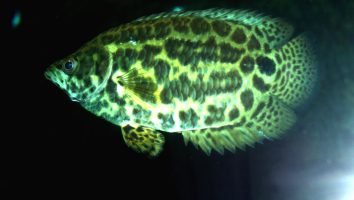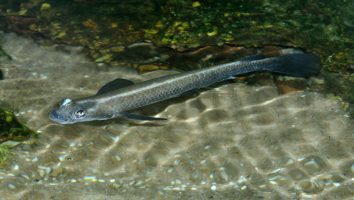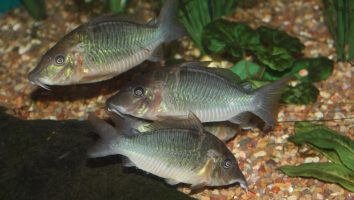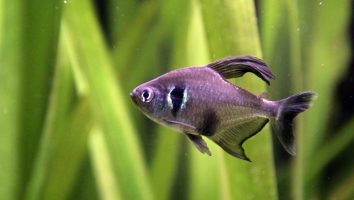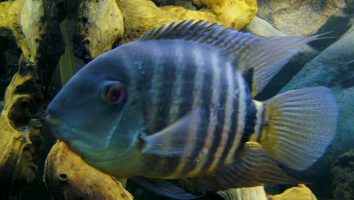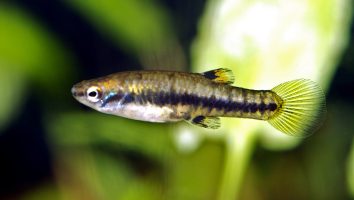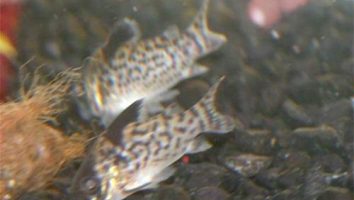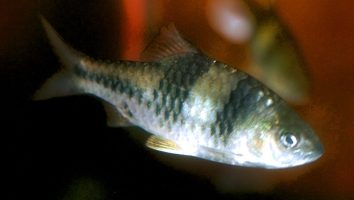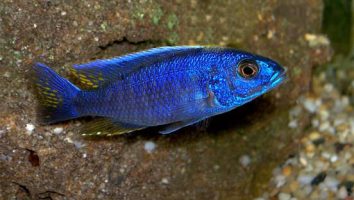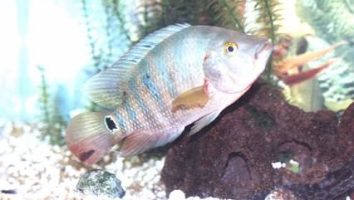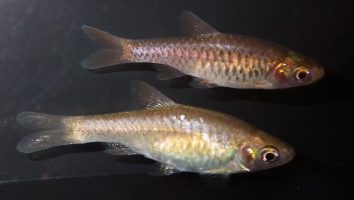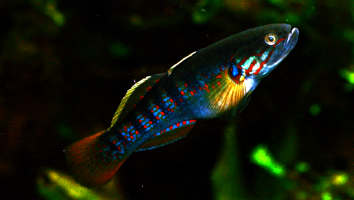The Flowerhorn cichlid is a man-made freshwater fish that’s become quite popular in the aquarium trade.
They’re easily recognizable by their bright colors, large size, and “horn” on their head.
Despite their popularity, there’s still a lot of confusion about how to properly care for them. In this guide, we’ll teach you everything you need to know about Flowerhorn cichlid care.
You’ll learn about their diet, tank mates, size, lifespan, and more!
Table of contents
Species overview
The flowerhorn cichlid (scientific name: Paraphysodon axelrodi) is a freshwater fish that’s native to Central America. It’s most heavily concentrated around the countries of Honduras and Nicaragua but can also be found in Costa Rica, Panama, and Mexico.
Flowerhorns are a type of cichlid, which is a family of fish that’s known for being quite aggressive. This is something to keep in mind if you’re considering getting a flowerhorn for your aquarium.
They prefer waters that are slow-moving and have a lot of vegetation. This is something that’s common among many types of cichlid.
The flowerhorn cichlid is a very popular fish in the aquarium scene. This is due in large part to their unique appearance. They are often bred to have very bright colors and patterns on their bodies.
Appearance
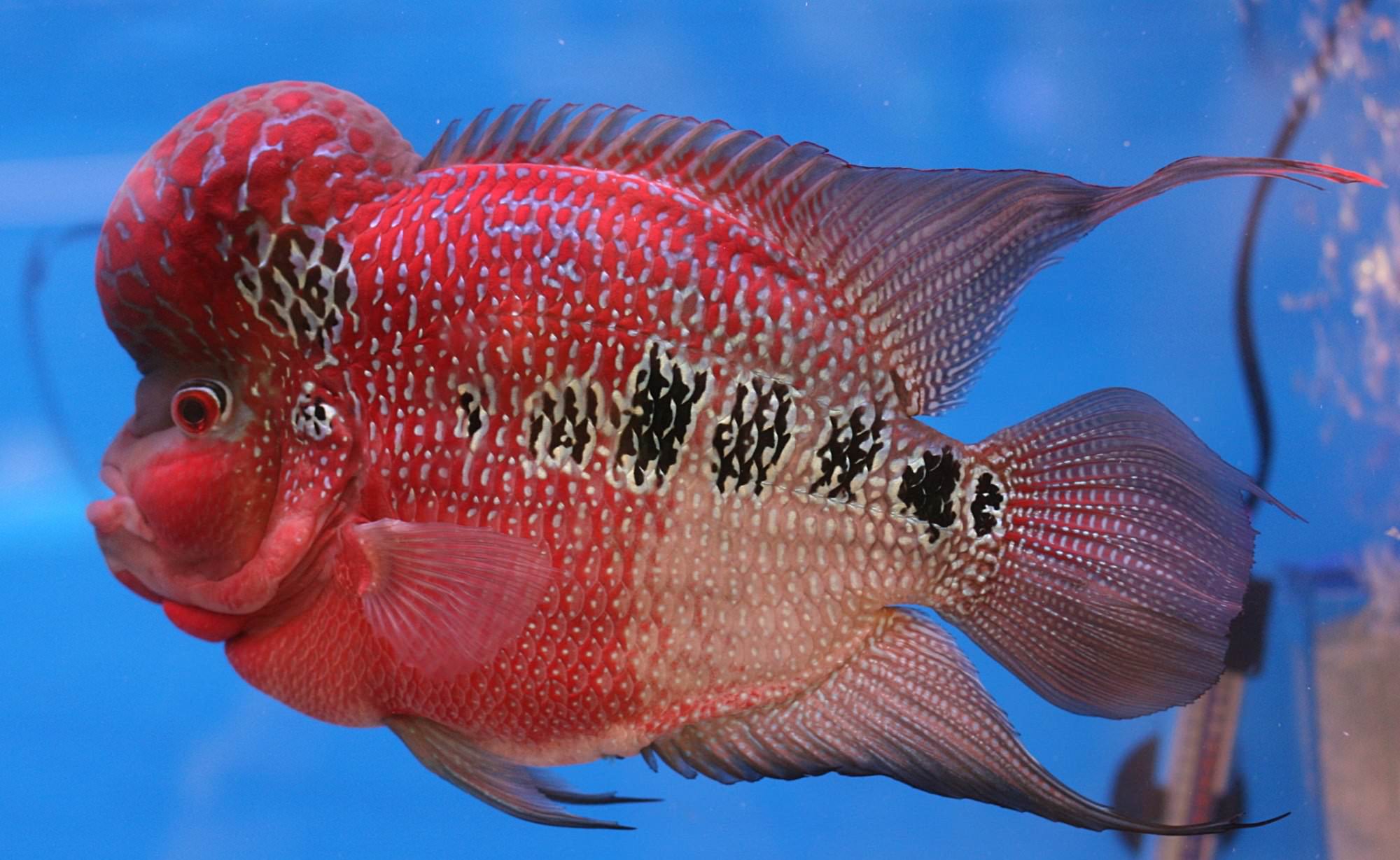
The Flowerhorn cichlid is one of the most unique-looking fish in the aquarium world. As their name suggests, these fish have a protrusion on their heads that resembles a flower.
This “flower” is actually a growth on their heads called a nuchal hump. This hump is used to attract mates and can vary significantly in size from one fish to the next.
The color of the Flowerhorn cichlid is just as varied as the size of their nuchal hump. You’ll find these fish in every color of the rainbow (and then some).
Their bodies are thick and oval-shaped. They have large fins that are used for intimidation as well as for attracting mates.
The dorsal fin is tall and triangular. The anal fin is shorter and more rounded. Both of these fins have colorful edges that can be used to help identify the sex of the fish.
Males usually have more colorful fins, and the colors are more vivid. Females tend to have more muted colors.
The caudal fin is large and fan-shaped. This fin is also used to help attract mates.
Lifespan
Flowerhorns have a lifespan of around 8 years. This can be increased or decreased depending on the quality of care they receive.
For example, if a Flowerhorn is kept in a small tank with poor water quality then their lifespan will be much shorter.
Conversely, if they’re given plenty of space to swim around in and are well-fed then they can easily live for 8 years or more.
Size
Flowerhorns can grow quite large, with the average size being around 16 inches. However, some have been known to grow up to 24 inches in length!
Tank
Tank Size
The minimum tank size for a Flowerhorn cichlid is 50 gallons. This is assuming you’re keeping them in a single fish tank. If you want to keep more than one Flowerhorn cichlid, you will need an additional 30 gallons for each fish.
We recommend a 75 gallon tank if you’re keeping multiple Flowerhorn cichlids.
Water Parameters
The Flowerhorn cichlid is a tropical freshwater fish that comes from fast-moving rivers and streams in Southeast Asia. In the wild, these fish are used to living in water with a high dissolved oxygen content and a moderate water flow.
To replicate these conditions in the home aquarium, it is important to maintain the following water parameters:
- Water temperature: 75 to 86 degrees Fahrenheit
- pH levels: 6.5 to 7.5
- Water hardness: 8 to 20 dGH
- Alkalinity Levels: 3-10 dKH
What To Put In Their Tank
The Flowerhorn cichlid is a beautiful freshwater fish that is native to Central America. They are a popular choice for aquariums because of their vibrant colors and interesting personalities.
When it comes to setting up the inside of their tank, there are a few things that you will need to take into consideration.
First of all, these fish get quite large (up to 18 inches in some cases) so you will need a tank that is at least 75 gallons. If you plan on keeping more than one Flowerhorn cichlid then you will need an even larger tank.
The second thing to consider is the type of substrate that you will use. Flowerhorn cichlids are known to dig a lot so we recommend using a sand or gravel substrate. This will give them something to dig in and also help to keep their tank looking clean.
Another important consideration is the type of plants that you will use. Flowerhorn cichlids are known to eat plants so you will need to choose something that is tolerant of their herbivorous diet ( Java fern, Anubias , or Hornwort are all good choices).
Last but not least, you will need to include some hiding places for your fish. Flowerhorn cichlids are known to be quite shy so they will need some places to hide when they feel scared or threatened. Driftwood, caves, and rocks are all great choices.
Common Diseases
Flowerhorn cichlids are relatively hardy fish, but they’re still susceptible to many of the same diseases and illnesses as other freshwater species.
The most common disease that these fish experience is Ich. This is a very common parasite that can become quite serious if it’s not dealt with.
The most obvious sign of this disease is the series of white spots that will begin to cover the body of your fish.
There are plenty of other potential diseases that can affect this species as well, but they’re not as common.
Another thing to look out for is infection from cuts. The most common cause of this is keeping your Flowerhorn in a tank with a rough substrate (or aggressive species that want to fight).
In general, the best way to prevent these fish from getting sick is to maintain the quality of the water in their tank. A tank with clean and stable water conditions always leads to healthier fish who are more resistant to disease.
Behavior & Temperament
The flowerhorn cichlid is a notoriously aggressive fish. In the wild, these fish are known to be one of the most aggressive freshwater fish around. That reputation carries over into the aquarium world.
Flowerhorns are not a good choice for a community tank. They will attack other fish, regardless of size or species. They have been known to kill and eat smaller fish, and they will fight with other fish that they see as a threat.
The only time you will see flowerhorns being peaceful is when they are spawning. During spawning, the male and female will be relatively peaceful with each other. But, as soon as the eggs are laid, the aggression will start again.
If you’re looking for a peaceful community fish, the flowerhorn cichlid is not the fish for you.
Tank Mates
The Flowerhorn cichlid is not a community fish. It can be aggressive and territorial, and it’s not shy about expressing itself. For these reasons, it’s best to keep them alone or with other aggressive species.
Some good Flowerhorn cichlid tank mates include:
- Other Flowerhorn cichlids
- Oscars
- Texas cichlids
- Green Terror cichlids
- Jack Dempseys
- Firemouth cichlids
Breeding
Flowerhorns are not the easiest fish to breed. They’re very picky about their environment and need very specific conditions to spawn.
The first thing you need to do is get a pair of fish. This can be tricky since Flowerhorns are not naturally occurring. They’re the result of years of selective breeding. You’ll need to find a reputable breeder to get your hands on a pair.
Once you have your pair, you need to set up the perfect environment. The water should be between 78 and 82 degrees Fahrenheit. The pH should be between 6.8 and 7.2. The hardness should be between 10 and 15 dGH.
You also need to make sure the tank is large enough. A pair of Flowerhorns needs at least a 75-gallon tank. But the bigger, the better. They’re very active fish.
The next step is to add the appropriate decor. The tank should have plenty of hiding places. Driftwood, live plants, and caves are all good options.
Once the tank is set up, it’s time to introduce the pair of fish. They should be of similar size and age. The female will usually be the larger of the two.
The pair will likely spend some time establishing their territory. This can be a bit aggressive, so it’s important to have plenty of hiding places. Once they’ve settled down, they’ll start to breed.
The female will lay a large number of eggs. The male will then fertilize them. Once that’s done, the female will pick up the eggs and move them to a safe place.
The eggs will hatch in about three days. The fry will be free-swimming a few days after that. At this point, you can start to feed them baby brine shrimp and other small foods.
Conclusion
The Flowerhorn cichlid is a beautiful and unique fish that will definitely add some flare to your tank. They’re also relatively easy to care for, which is always a bonus.
However, there are a few things you need to be aware of before you decide to get one.
First, they can be aggressive, so you’ll need to make sure you have a tank that’s big enough for them and that has plenty of hiding places for the other fish.
Second, they’re messy eaters, so you’ll need to be prepared to do a little extra cleaning.
Overall, we think the Flowerhorn cichlid is a great choice for most tank owners. Just be sure to do your research and be prepared for their unique needs!

